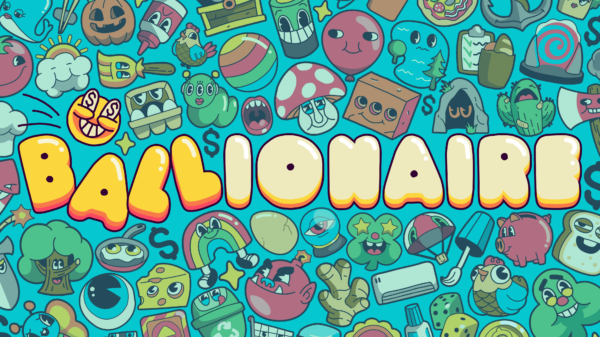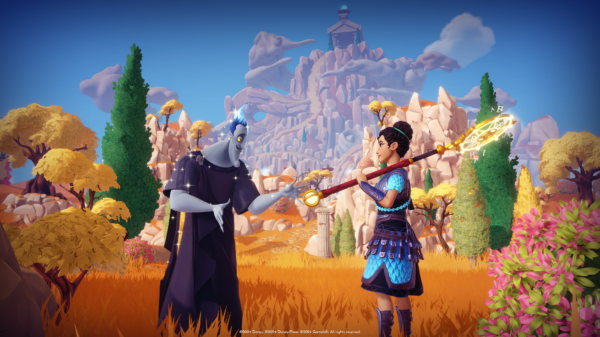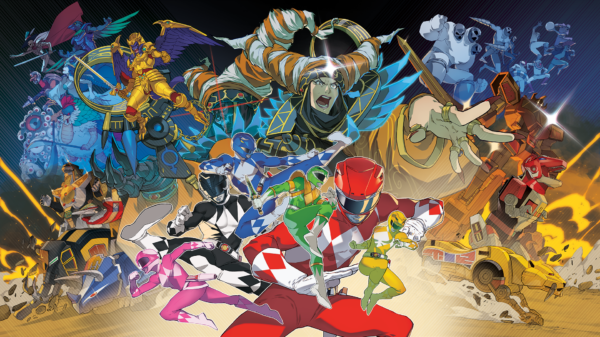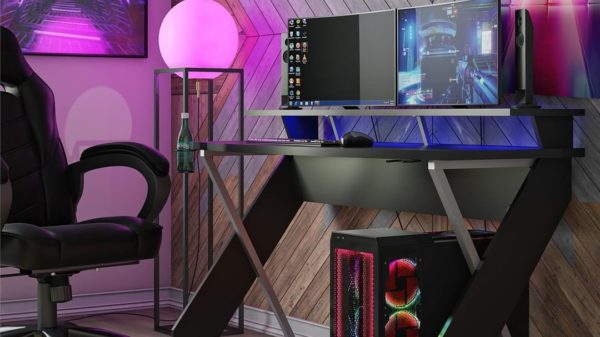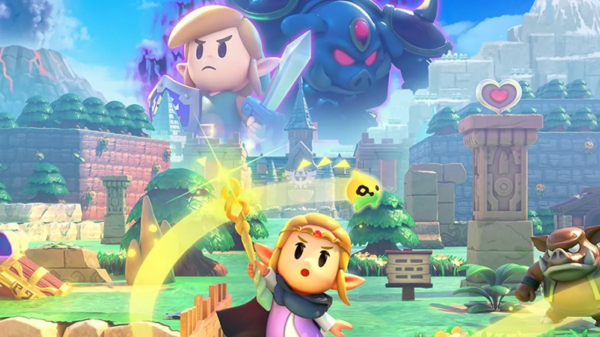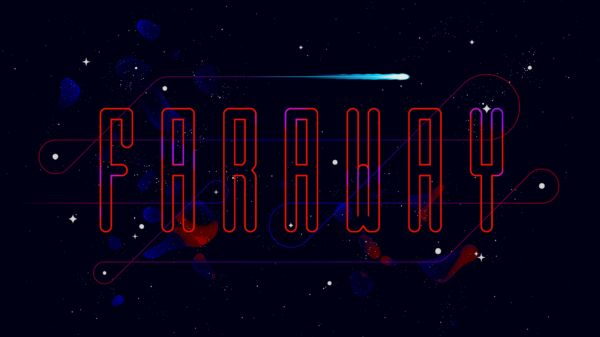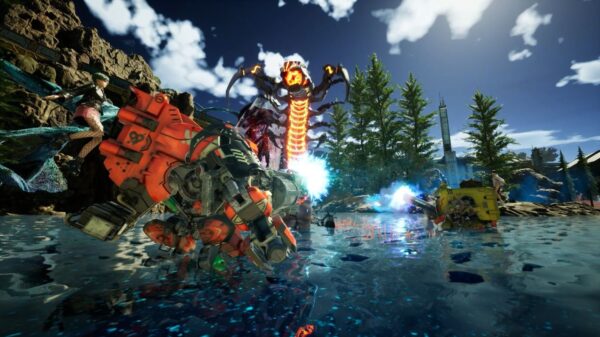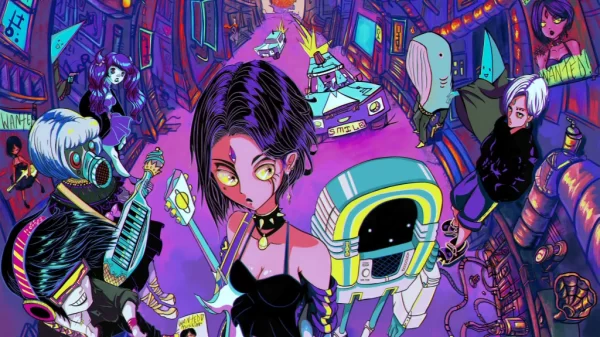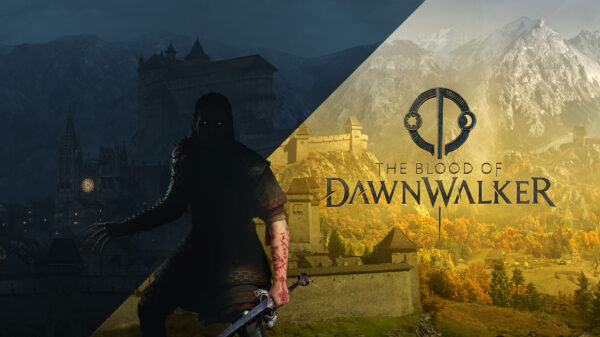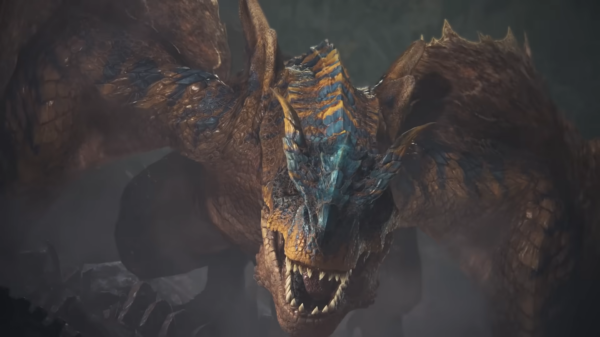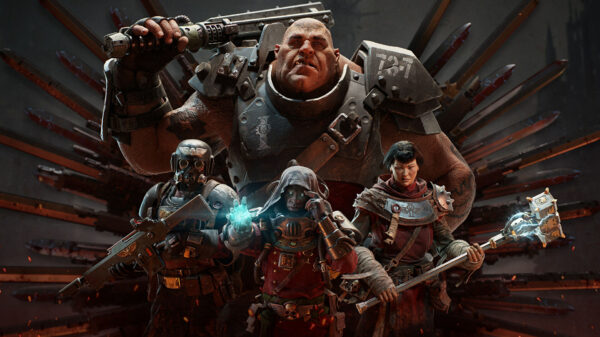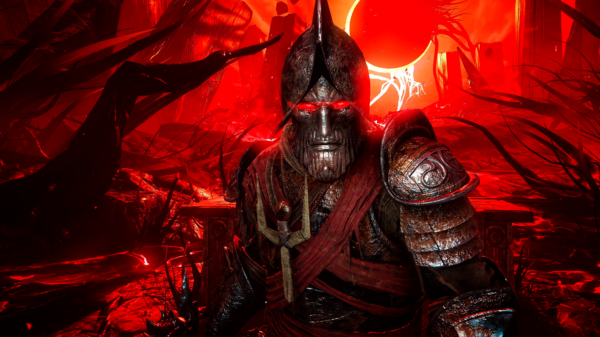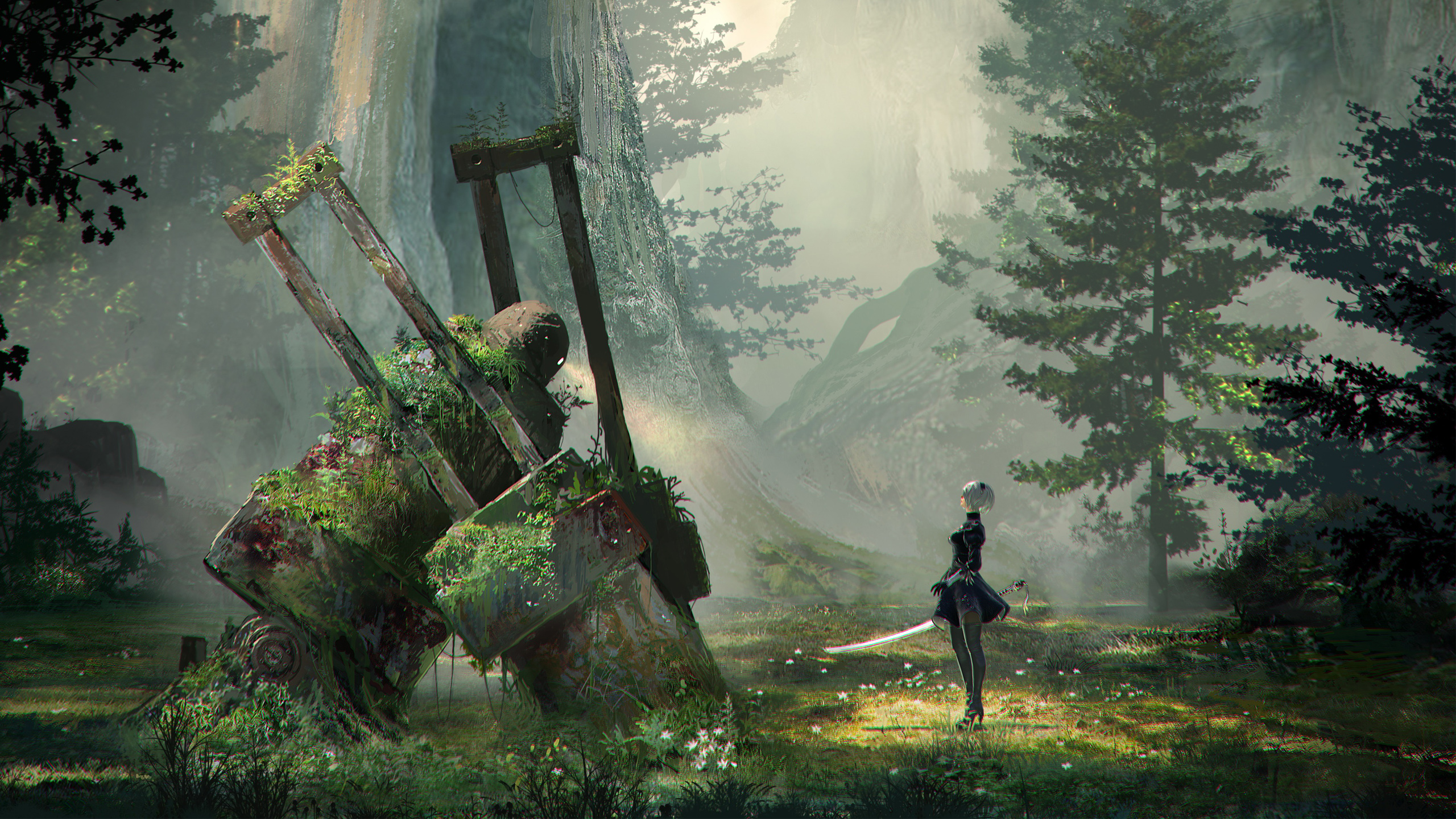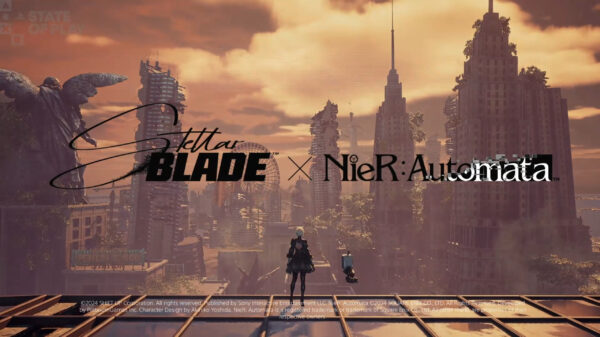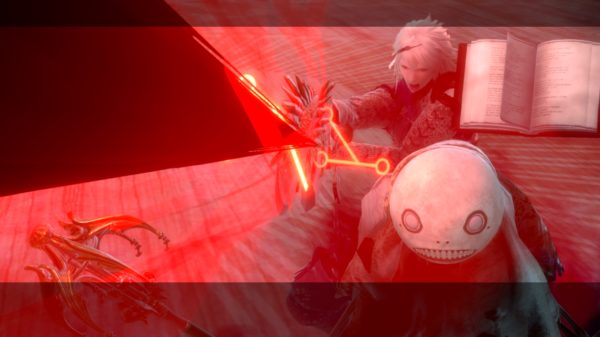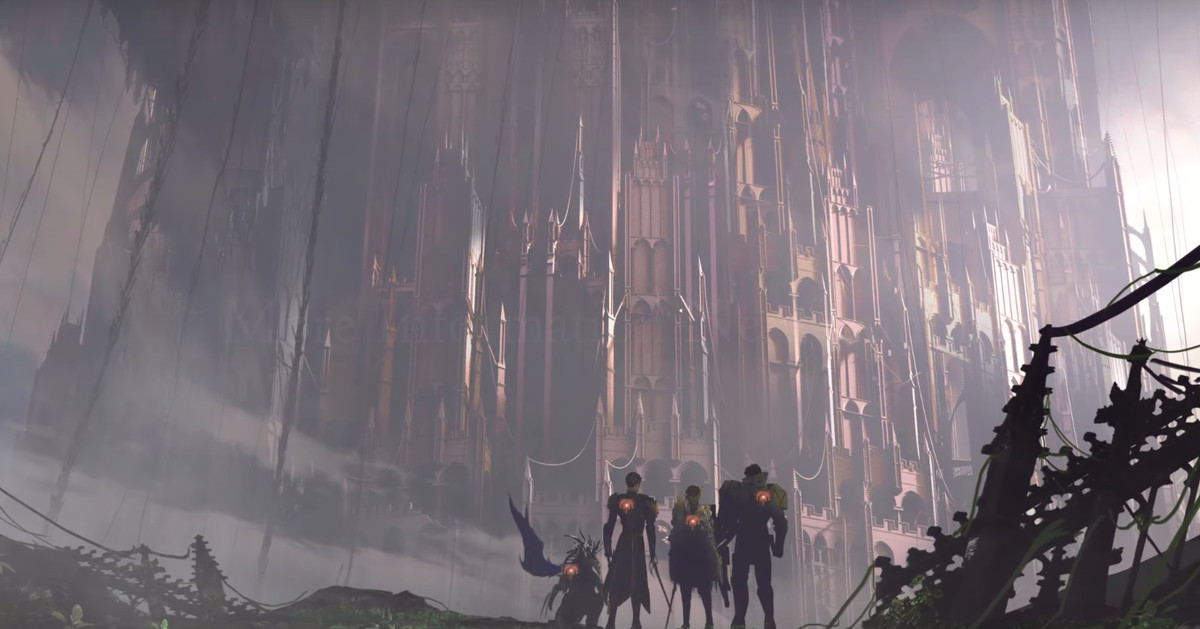NieR: Automata is a third person action adventure with RPG elements from Platinum Games. While it is technically a sequel to 2010’s NieR, you don’t need knowledge of its predecessor to enjoy Automata.
NieR: Automata
Developer: Platinum Games
Price: $59.99
Platforms: PS4 (Reviewed), PC
In the distant future, Earth exists in a dystopian state, ravaged by machines that humanity created. What remains of humanity has fled to space and built bases in Earth’s orbit, as well as on the moon. Humans then had to build synthetic guardians, or androids to protect them and fight the machines that took over Earth. Our main character is a female android, 2B. There are squads of androids that run missions on Earth’s surface in an attempt to locate large machine anomalies and take back territory piece by piece. The first mission thrusts the player straight into one of these anomaly location missions, and serves as intro into the series and world for the missions that come. This style of game opening could be jarring depending on who you are, but it also shrouds the beginning of the game in mystery, and makes uncovering what has happened to Earth and what the machines, or automata have planned for humanity more compelling. 2B has a fellow android, 9S that helps her throughout the game, and is even a playable character later on. There is a third playable character, A2, another female android that shows up even later. The relationship between these androids is an integral part of the story and is in question due to the fact that they aren’t actually human, but act as though they are, giving the story another strong element on top of its dystopian setting.
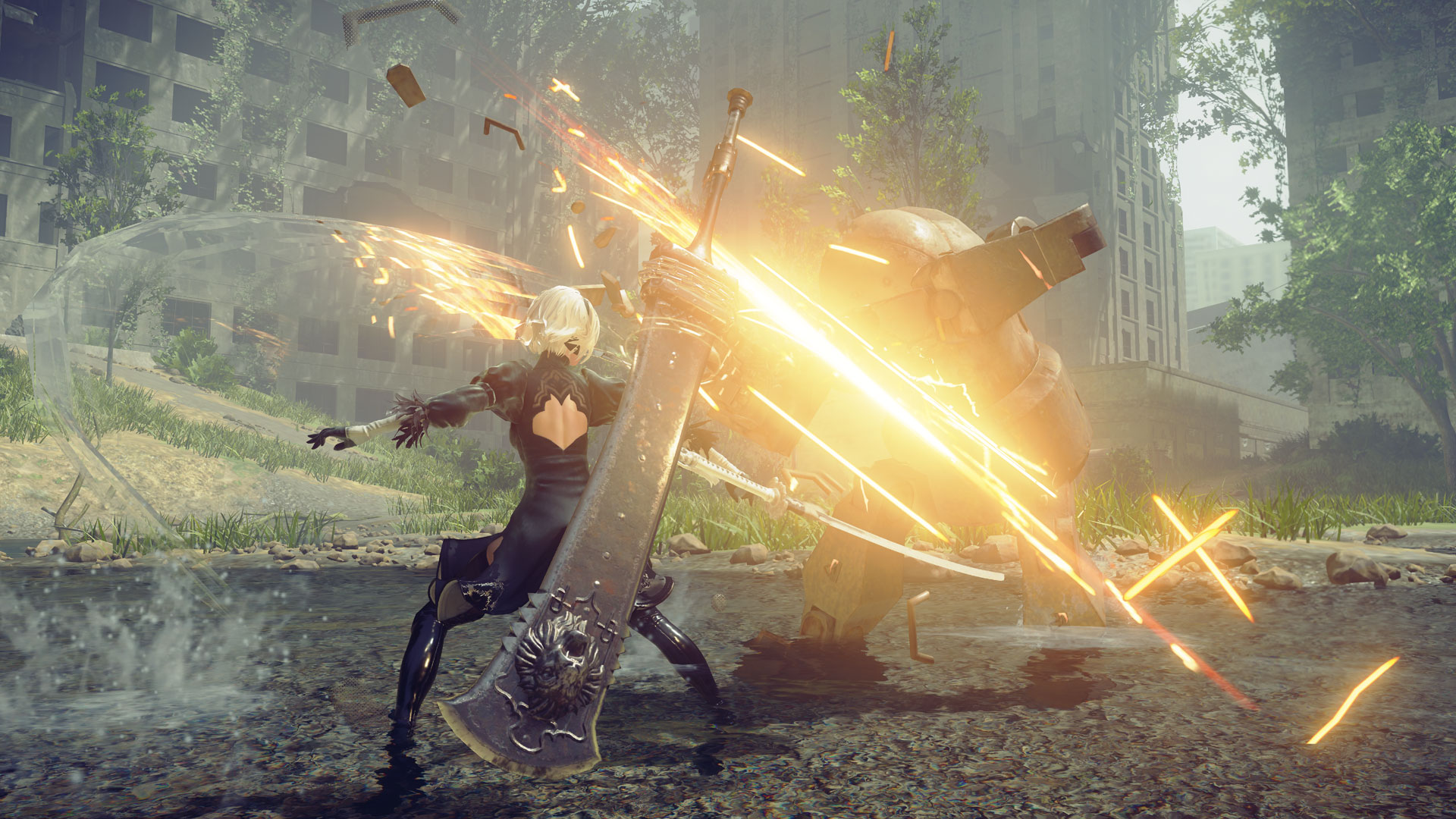
On the surface, NieR: Automata to the casual gamer may look like any other button mashing third person adventure, but Platinum Games adds RPG elements in a way that sets the game apart from the tier of games it seemingly falls under. It is more open world and freeing than it appears, giving you a vast mission area that is explorable, filled with secrets, loot, and side missions. The player can just as easily focus on the main story, and in that sense enjoy a well thought out action adventure. There is a leveling system within the game, making side objectives and exploration more fun to commit to, in order to grow your character. Skills are changed and obtained through plug-in chips, which can be purchased or found in the world to alter your playstyle and further your character’s power. The player can even go into the settings and disable certain elements such as the HUD or targeting system since the character you play as is an android, and can be modified on this technical level. There is even a self destruct option that can be utilized if needed. Death in NieR acts similarly to Dark Souls in the sense that when you die, your body stays on the map and you must make your way back to it to retrieve items, and in NieR’s case, your level. If you fail to make it back to your previous body, you will lose your level progression. The game implements this death system due to the fact that you play as an android, and can therefore be replaced if killed. 2B’s consciousness cannot die, as she is a program, and this element to the story made me appreciate how science-fiction it was.
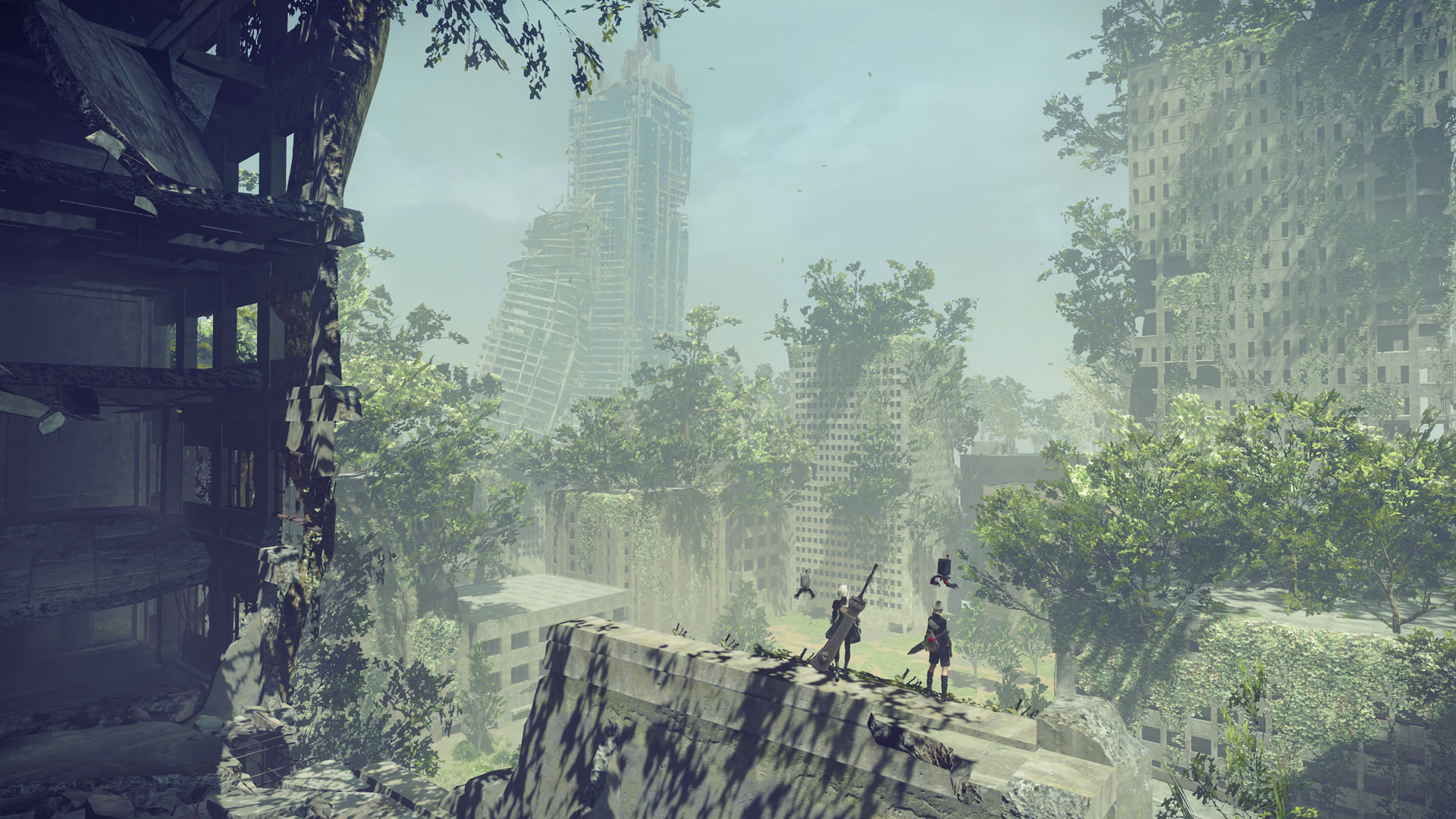
Combat in NieR feels polished and fluid, allowing the player to construct large combos paired with speedy maneuvers to dispatch its robotic antagonists. 2B can equip two weapons, one mapped to square, which is the lighter, quicker attack, and one mapped to triangle, the heavier, slower attack for dealing heavier damage. A second configuration is accessible by pressing up on the directional pad, which swaps triangle and square, making which weapon does heavy attacks and which does light attacks swap on the fly. Switching the heavy and light attacks opens up new moves for each weapon, and changes the playstyle seamlessly, giving the player more variety in how they fight. This variety is achieved by the sheer number of different weapons that can be found throughout the duration of the game. There are multiple weapons in each category, and four weapon categories in total; small swords, large swords, spears, and combat bracers, which act as different gloves for fist fighting. 2B is also equipped with a small robot, or “pod” that hovers at her shoulder, which acts as her targeting system, and allows the player to shoot enemies with an automatic stream of bullets at a distance. While this droid does little damage in comparison to melee attacks, it is still effective in keeping enemies busy while attacking multiple foes at once, along with adding damage to melee combos. The droid is also able to equip different abilities that are on a cooldown. The game starts out by giving you a laser to use for large amounts of damage dealt to multiple enemies at once, and there are additional, even more powerful moves to unlock as the game continues. One of NieR Automata’s biggest lures in its combat is the wonderfully done boss fights, and the sheer variety of the sequences they take place in. Boss fights range from giant robotic oil rigs that are twenty times your size to a rogue android that fights you quickly on your feet. The change of pace that these fights offer keeps the game fresh.
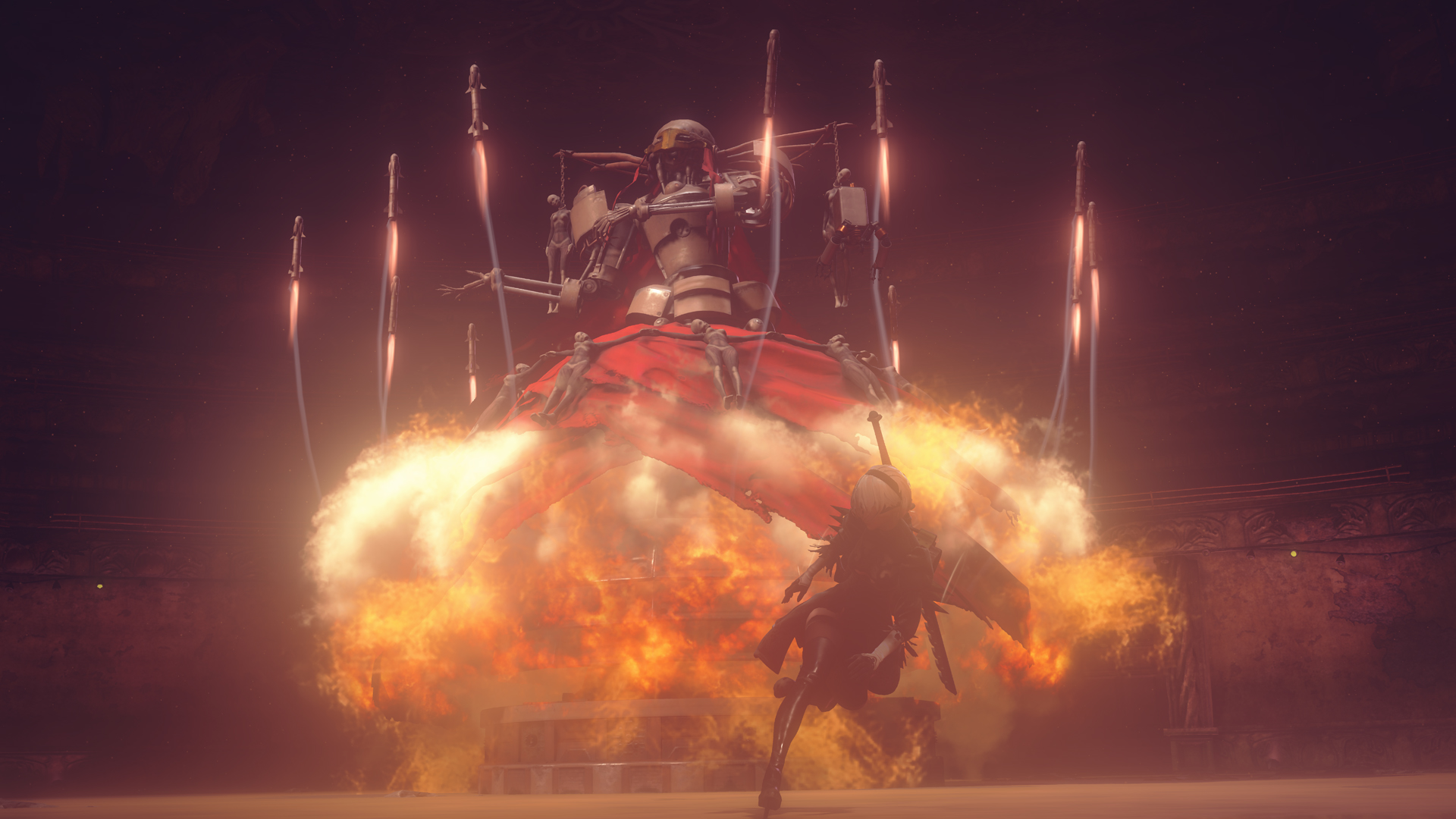
As NieR goes on, the story and world grows more quirky and interesting, creating a feeling unlike any other game I can think of ever having played. It’s a nice feeling to be playing a game that feels unique and new in world of recycled games and ideas. That being said, it’s still not the perfect game. Throughout NieR there are sequences that change the playstyle and camera angles and adopt playstyles from games of completely different genres. Sometimes the over-the-shoulder view becomes one that is top-down and distant. While the combat and controls stay the same, the camera change sometimes felt jarring and disconnected me from how fluid the standard third-person view felt. This doesn’t ruin the game, but I much preferred the standard camera view, and found myself annoyed when the style changed. There were also less annoying sequences of flying the flight suit on a rail and taking out enemies as they appear on screen, that felt arcade-like and were fun, but drug on too long sometimes. While there is nothing wrong with games of this style, it was less exciting than the standard third person gameplay and felt unnecessary. Some people may like the change of pace that the camera change and rail portions offer, but I personally preferred the behind-the-camera gameplay because of how fluid and satisfying it was, and felt that the playstyle change happened too often in some cases, and took me out of the action I wanted. Despite these interruptions, the thrilling third person combat is standard and more prevalent, so the changes in no way ruin the game, only distract from what is the most fun occasionally. NieR also houses an impressive twenty-six possible endings depending on how you play the game, which no doubt inspires players that are locked into the game to go back and keep playing after beating it. The longevity in this sense is refreshing.
 The Final Word
The Final Word
NieR: Automata is a wonderfully crafted and entertaining science fiction adventure. Its story holds enough mystery and wonder to hold your attention, and its boss fights will challenge you in the best way. Regardless of its occasional changes in camera angles and railed combat, its third person button mashing will entertain you for hours to come, especially if you don’t like the ending you may receive. If you have the time and money, you will not be disappointed.
– MonsterVine Review Score: 4.5 out of 5 – Great

